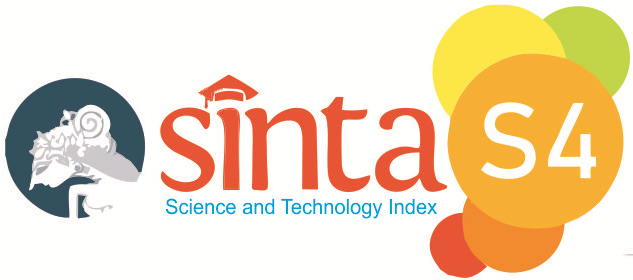JUCO (Jump Counting) learning strategies resolve student learning in integer materials
DOI:
https://doi.org/10.32332/xf32nf10Keywords:
JUCO (Jump Counting), integers, learning outcomesAbstract
The impact of curriculum changes requires teachers to think creatively and innovatively in delivering learning materials. The new curriculum, The Independent Curriculum, encourages the packaging of learning by paying attention to student learning styles, aiming that all learners are facilitated in their learning. Students in the sixth grade of PTQ Annida Salatiga Elementary School still have difficulties understanding the concept of integer operations, impacting learning outcomes that are still much below the standard value or KKM that has been determined. For this reason, teachers innovate learning using JUCO (Jump Counting). The purpose of using this media is to facilitate and improve students' learning outcomes with more fun and meaningful learning. The method used in this study is descriptive quantitative, with research instruments used as pre-test and post-test, where the results will be analyzed. The study was conducted on 21 Elementary School students in Grade IV. The result of using JUCO (Jump Counting) is an increase in learning outcomes by 18.98%. JUCO makes it easier for teachers to convey material and learners in learning, making it easier to accept the concept of the material presented. The impact of the use of JUCO (Jump Counting) from affective and psychomotor aspects, including collaborative.
References
Benedicta Dwi Adventyana1, E. N. A. A. , M. A. , M. , S. F. N. F. , P. (2024). 4980-Article Text-13329-1-10-20240109. Journal on Education, volume 6(Pendidikan), 1–9.
Damayanti, Y. N. (2014). Peningkatan Kemampuan Membilang Melalui Media Kartu Bergambar Pada Anak Kelompok B1 Tk Pkk 37 Dodogan Jatimulyo Dlingo Bantul. (Skripsi). Yogyakarta: Universitas Negeri Yogyakarta.
Feny Rita Fiantika et all. (2022). Metodologi Penelitian Kualitatif. In Metodologi Penelitian Kualitatif. In Rake Sarasin (Issue Maret). https://scholar.google.com/citations?user=O-B3eJYAAAAJ&hl=en
Hanifah, W., & Hasanah, H. (2019). Pengaruh Permainan Lompat Angka Terhadap Kemampuan Mengenal Angka 1-10 Pada Anak Di TK Aisyiyah Bustanul Athfal 1 Rambipuji Jember. JECIE (Journal of Early Childhood and Inclusive Education), 2(2), 64–73.
Ismiyati, Y. (2013). PENERAPAN METODE PERMAINAN BERHITUNG UNTUK MENINGKATKAN KEMAMPUAN KOGNITIF ANAK DI TKIT MUTIARA BUNDA TANGEN KABUPATEN SRAGEN TAHUN PELAJARAN 2012/2013. In UNIVERSITAS MUHAMMADIYAH SURAKARTA (Issue 55).
Karim, A., & Batubara. (2011). DIKTAT MEDIA KOMUNIKASI.
Kristiani, H., Susanti, E. I., Purnamasari, N., Purba, M., Saad, M. Y., & Anggaeni. (2021). Model Pengembangan Pembelajaran Berdiferensiasi. KEMENTERIAN PENDIDIKAN, KEBUDAYAAN, RISET, DAN TEKNOLOGI BADAN STANDAR, KURIKULUM, DAN ASESMEN PENDIDIKAN PUSAT.
Sugiyono, P. D. (2016). Metode Penelitian Kuantitatif, Kualitatif dan R&D.
Suryana, E., Aprina, M. P., & Harto, K. (2022). Teori Konstruktivistik dan Implikasinya dalam Pembelajaran. JIIP - Jurnal Ilmiah Ilmu Pendidikan, 5(7), 2070–2080. https://doi.org/10.54371/jiip.v5i7.666
Zuhriyyah, K. (2019). PENINGKATAN KETERAMPILAN MELOMPAT MELALUI PERMAINAN MODIFIKASI PUZZEL KATAK PINTAR KELOMPOK A TAMAN KANAK KANAK BRILLIANT WARU SIDOARJO. In UNIVERSITAS ISLAM NEGERI SUNAN AMPEL SURABAYA (Vol. 8, Issue 5).
Downloads
Published
Issue
Section
License
Copyright (c) 2025 Isti Winarni, Lakna Tulas'un

This work is licensed under a Creative Commons Attribution-ShareAlike 4.0 International License.

















